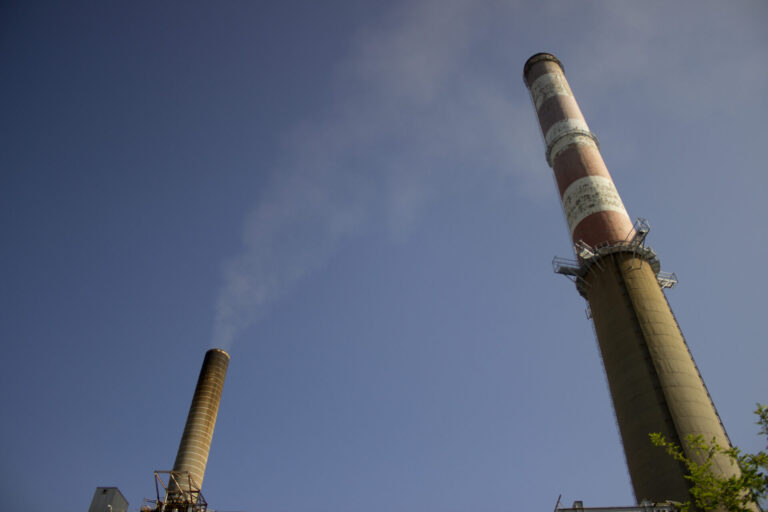Warren Buffett’s Methane Emissions Purchase From Dominion Energy

Warren Buffett, chairman of Berkshire Hathaway, further solidified his company as a large contributor to global warming with the purchase of Dominion Energy’s gas transmission assets last month.
“We are very proud to be adding such a great portfolio of natural gas assets to our already strong energy business,” Buffett said in a press release.
Berkshire Hathaway will pay $4 billion in cash and assume another $5.7 billion of Dominion’s debt, giving the transaction a near-$10-billion enterprise value. The investment comes after recent signals that Buffett might have been turning away from fossil fuels and toward renewable energy. Buffett acknowledged at the company’s annual shareholder meeting in April that the $10 billion investment he made in Occidental Petroleum, an oil and gas exploration and midstream company, was a mistake. Berkshire Hathaway had even decided against investing $4 billion in a liquified natural gas (LNG) export facility by the Saguenay port in Quebec, Canada, in March. The Canadian LNG project included a 485-mile pipeline extension of a TransCanada pipeline. Buffett and Greg Abel, the executive chairman of Berkshire Hathaway Energy, told shareholders at the April meeting that they planned to invest more in wind and solar.
Instead, the “Oracle of Omaha” added 7,700 miles worth of gas pipelines, gas storage facilities, and part ownership of a liquid natural gas export facility to its existing midstream fossil fuel portfolio. After the acquisition, the company will be transporting 18% of all interstate natural gas transmission in the country, up from 8%.
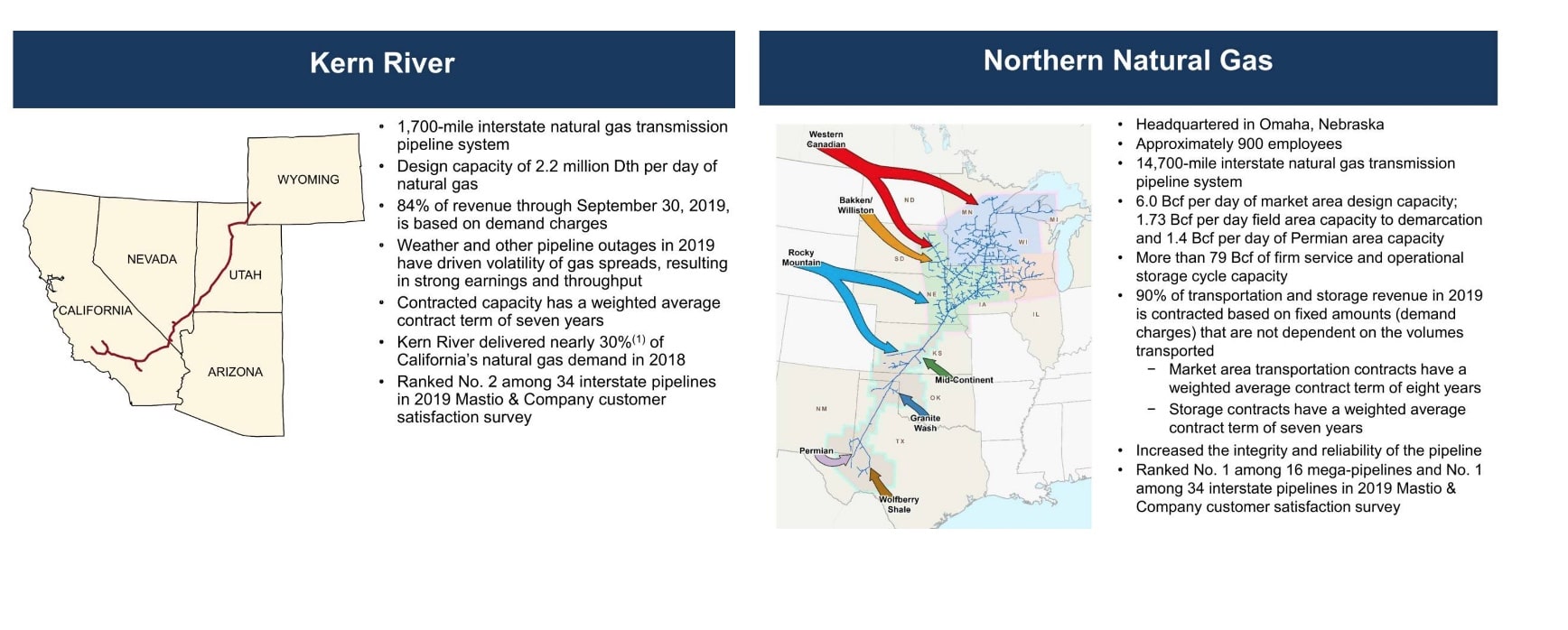

Market analysts’ observations about the purchase have ranged from calling it a “prudent move and one that can be strategically justified and also tucked into the existing business model,” to “Buffett has purchased a wasting asset—a decision BHE’s shareholders are likely to regret over time.”
But one thing is clear, Buffett is now accountable for at least an additional 1,663,568 metric tons of carbon dioxide equivalent (CO2e) emitted into the atmosphere every year from Dominion’s midstream gas infrastructure — on top of the millions of metric tons of global warming pollution Berkshire Hathaway already emits.
Buffett’s Purchase
Berkshire Hathaway’s midstream portfolio, before the Dominion acquisition, reported at least an estimated 2,444,950 metric tons of CO2e in 2018. (CO2e allows other greenhouse gas emissions, including methane, to be expressed in terms of CO2 based on the relative global warming potential).
According to self-reported data, Berkshire’s Northern Natural Gas pipeline emitted at least 1,634,982 metric tons of CO2e last year. Kern River reported at least 809,968 metric tons of CO2e. (Operators of natural gas systems are required to report emissions from combustion, venting, equipment leaks, and flaring — this does not include the emissions of the transported gas once it is burned or leaked by the local distribution company or by the end-user.)
With the purchase of Dominion’s midstream gas pipelines, storage facilities, compressor stations, and a 25% ownership stake in the Cove Point liquified natural gas facility, Berkshire Hathaway now is responsible for another estimated 1,663,568 metric tons of CO2e, at a minimum, from Dominion’s midstream gas infrastructure – an increase of about 40% over its previous total.
Data collected by the EPA GHG Reporting Program for 2018 and presented in units of metric tons of carbon dioxide equivalent using GWP’s from IPCC’s AR4.
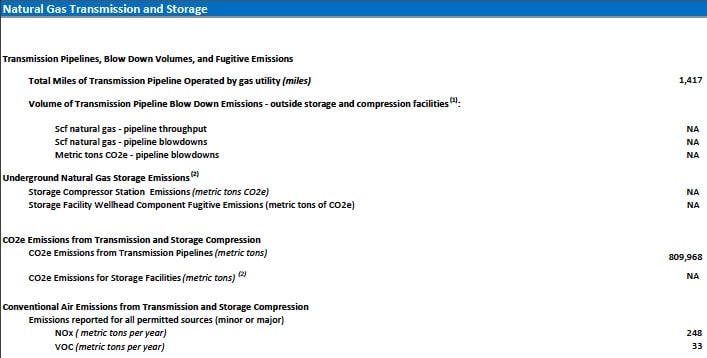
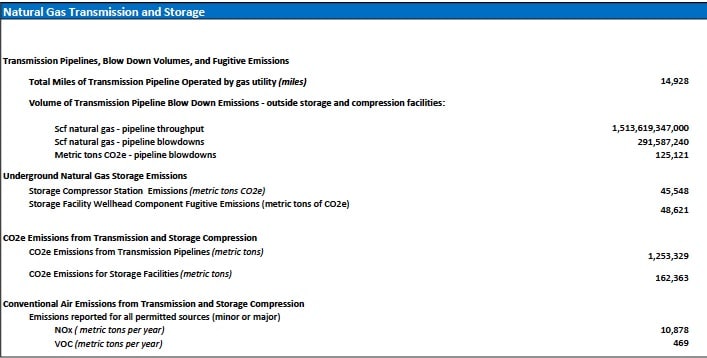
Berkshire Hathaway’s local distribution companies, MidAmerican and Sierra Pacific, also reported a total of 92,787 metric tons of CO2e in leaks in 2018, but it’s likely that those numbers are lower than the actual emissions, especially if cities have aging infrastructure. A team of scientists flew aircraft over six U.S. cities in 2018 and found methane emissions more than twice the estimated amounts in EPA’s dataset for these cities. Eric Kort, a professor at the University of Michigan who co-authored the study told E&E News, “We can pinpoint pretty well … that this much is coming from emissions that are coming out of the natural gas distribution system somewhere in this domain. But what we can’t say very well is did that come out of pipelines that are sending things into different neighborhoods, or pipes into people’s homes, or does it come out in people’s homes?”
Berkshire Hathaway also owns BNSF Railway Company, which made $3.7 billion last year and $4 billion in 2018 by transporting coal to electric utilities, primarily from Powder River Basin mines in Wyoming.
Methane Regulations and Reduction in Use Under Biden?
While Berkshire reports its data to the EPA in metric tons of CO2e, what it’s really talking about is the methane emitted and leaked from its midstream gas assets. Methane has a shorter atmospheric life compared to carbon dioxide but is 84 to 87 times greater over a 20-year period. The latest UN IPCC report makes clear that economies must not only make deep reductions in carbon dioxide but that they must also focus on short-lived pollutants like methane because of the need to make immediate cuts to maintain any hope of staying below 1.5 degree celsius.
Yet methane emissions are on the rise and U.S. oil and gas drilling is a major contributor to the increase. Rob Jackson, a Stanford University scientist who leads the Global Carbon Project that published two papers last month on this topic, said, “Natural gas use is rising quickly here in the U.S. and globally. It’s offsetting coal in the electricity sector and reducing carbon dioxide emissions, but increasing methane emissions in that sector. As a result, we’re emitting more methane from oil and gas wells and leaky pipelines.”
Democratic presidential nominee Joe Biden said earlier this year that “aggressive methane pollution limits for new and existing oil and gas operations” would be part of his “day one” executive action.
The Trump administration weakened and canceled methane regulations in its early days. According to Harvard’s Environmental & Energy Law Program regulation rollback tracker, Trump’s EPA canceled an Obama-era requirement that oil and gas companies provide information about onshore equipment and controls that could reduce emissions of greenhouse gases, including methane.
The EPA is also moving forward with its reconsideration of Obama’s 2016 methane rule, which would have required oil and gas companies to plug and capture leaks from new and modified drilling wells and storage tanks. Earlier this month, the EPA finalized a rule to rescind regulations for methane emissions, including ending requirements that oil-and-gas producers have systems and procedures to detect methane leaks in their systems. The rule will also remove the largest pipelines, storage sites and other parts of the transmission system from EPA oversight of smog and greenhouse gas emissions. The rule could be reversed if Biden wins the presidential election and Democrats gain control of the Senate.
Supplying Gas to Customers and Sectors That May Shift Away From Fossil Fuels
Buffett might soon find himself in a growing bind as city, state and federal policymakers, pushed by an ever-growing movement for climate action, increasingly turn away from gas. The Biden campaign’s detailed climate change plan, for example, includes creating a zero-carbon pollution standard for the electricity sector by 2035, and a proposal to spend federal dollars boosting electrification of the building sector with the goal of cutting the carbon footprint of the nation’s building stock in half by 2035 — two policies that significantly would curtail the demand for gas.
Berkshire Hathaway’s current midstream customers include jurisdictions or utilities that have signaled a transition off of natural gas. For instance, the Kern River pipeline delivered almost a quarter of California’s demand for gas, including to Southern California Gas, San Diego Gas & Electric, and Pacific Gas & Electric customers. California has a 100% carbon-free electricity by 2045 standard, and communities in the state are passing policies to reduce the use of natural gas in new buildings.
Kern River also serves a number of NV Energy gas power plants, including the Walter M. Higgins and Silverhawk Generating Stations, both of which went into service in 2004 – although NV Energy is owned by Berkshire Hathaway.
Similarly, the newly-acquired Questar Pipeline system, or “Hub of the Rockies,” had been positioned to serve local distribution load growth and the potential coal-to-gas power generation switch in its Colorado, Utah, and Wyoming territories. A February 2018 presentation from Dominion includes various slides highlighting the company’s then-plans to expand that system, adding additional compressor stations or upgrading existing facilities all to ultimately increase long term capacity. But Pacificorp, another Berkshire Hathaway subsidiary, announced plans in 2019 to shut down 20 of its 24 coal-fired units by 2038 and add nearly 7,000 MW of renewable generation and storage capacity by 2025. Only one of the coal units will be converted to natural gas. Natural gas peaking capacity appeared in the preferred portfolio but Pacificorp said it is “outside the action-plan window” so it will continue to evaluate whether non-emitting capacity resources can be used instead. Pacificorp is Wyoming’s and Utah’s largest utility.
Berkshire also purchased the Dominion Carolina Gas Transmission (DCGT) system, which serves the vast majority of Dominion’s South Carolina gas customers and all of its power plants, with the exception of one gas-fired generator in Aiken County. With the cancellation of the Atlantic Coast Pipeline, Dominion is set to significantly invest in renewables in Virginia in order to comply with Clean Economy Act, which includes a 30% renewables by 2030 and 100% by 2045 standard. While South Carolina does not have a clean electricity standard, Dominion might take the same approach with its South Carolina subsidiary. Legislators unanimously passed the Energy Freedom Act last year that will accelerate community solar programs, residential and utility-scale solar, and battery storage.
Warren Buffett’s Indifference to Global Warming
In 2016, leading climate scientist James Hansen attended Berkshire Hathaway’s annual shareholder meeting. Hansen spoke in support of a shareholder resolution dealing with the risk that climate change poses to the company’s profitability. Berkshire management recommended shareholders vote against the proposal. The climate resolution failed.
In Buffett’s letter to investors that year, he wrote, “It seems highly likely to me that climate change poses a major problem for the planet. I say ‘highly likely’ rather than ‘certain’ because I have no scientific aptitude and remember well the dire predictions of most ‘experts’ about Y2K.” He also added that climate change should not be a worry for investors in the company.
One of Buffett’s subsidiaries, BNSF, also remains a member of the climate-denying organization American Coalition for Clean Coal Electricity (also referred to as America’s Power).
Notes about EPA Greenhouse Gas Emission Reporting Program Data
EPA’s GHG reporting program uses global warming potential values from the IPCC’s Fourth Assessment Report (AR4). IPCC’s AR5 increased the global warming potential for methane, which means EPA’s data undervalues Berkshire Hathaway’s contribution to global warming.
Additionally, the EPA program does not require companies to report small facilities, which leads to under-accounting. Dominion Energy’s 2019 Methane Emissions Reduction Report provides the company’s corporate inventory of methane emissions for comparison to the emissions it reported to the EPA in 2018. In other words, Berkshire Energy purchased more CO2e from Dominion than the amounts found in the EPA dataset.
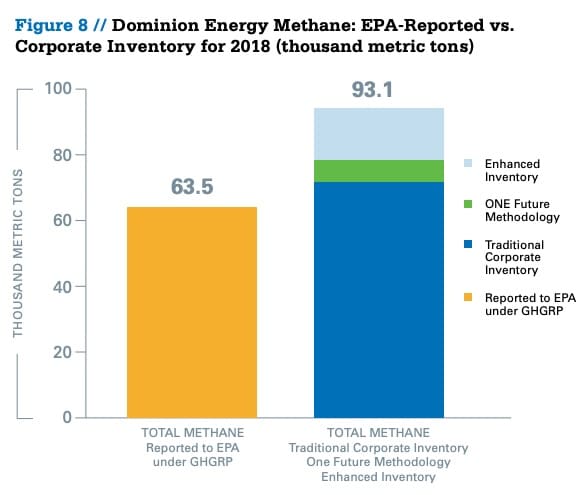
Featured image source: President Barack Obama meets with Warren Buffett, the Chairman of Berkshire Hathaway, in the Oval Office, July 18, 2011. (Official White House Photo by Pete Souza). Wikipedia Commons.

